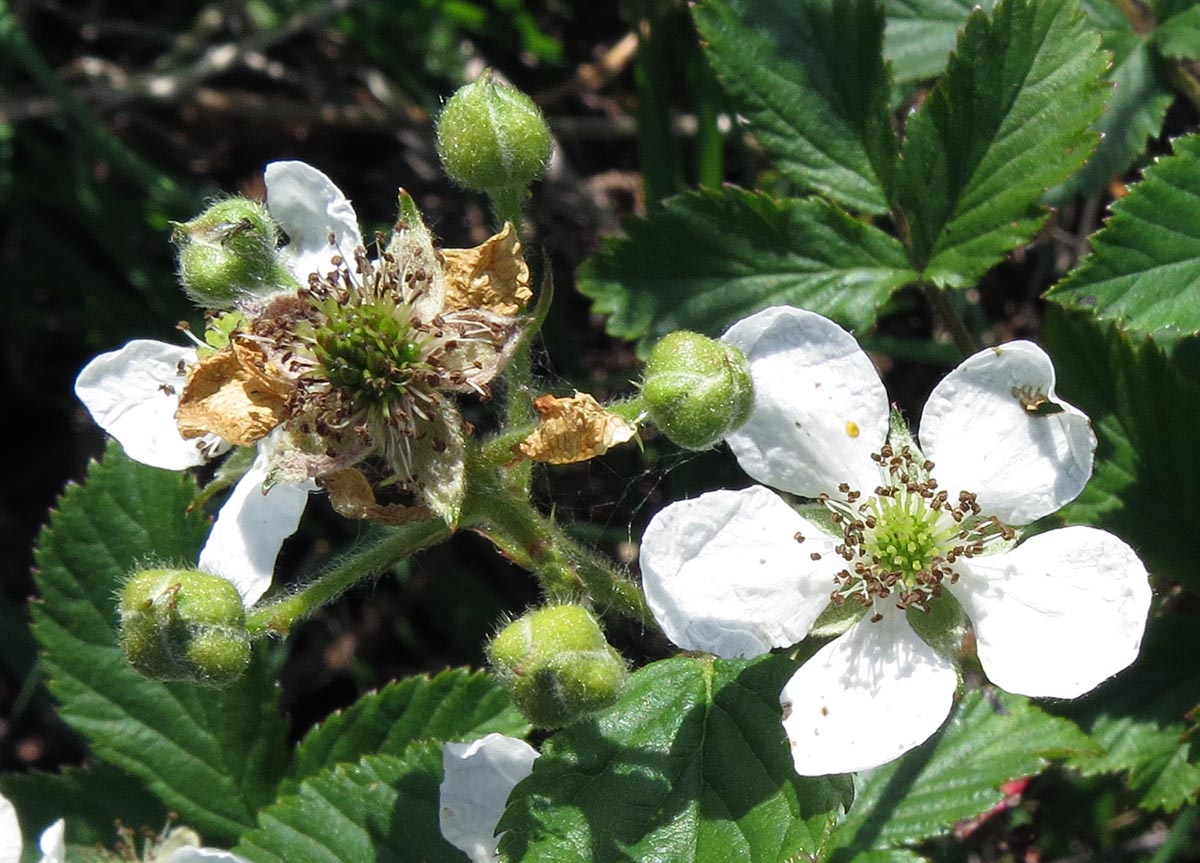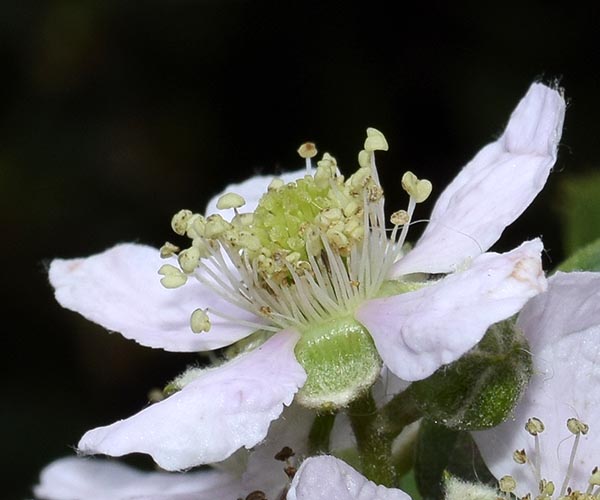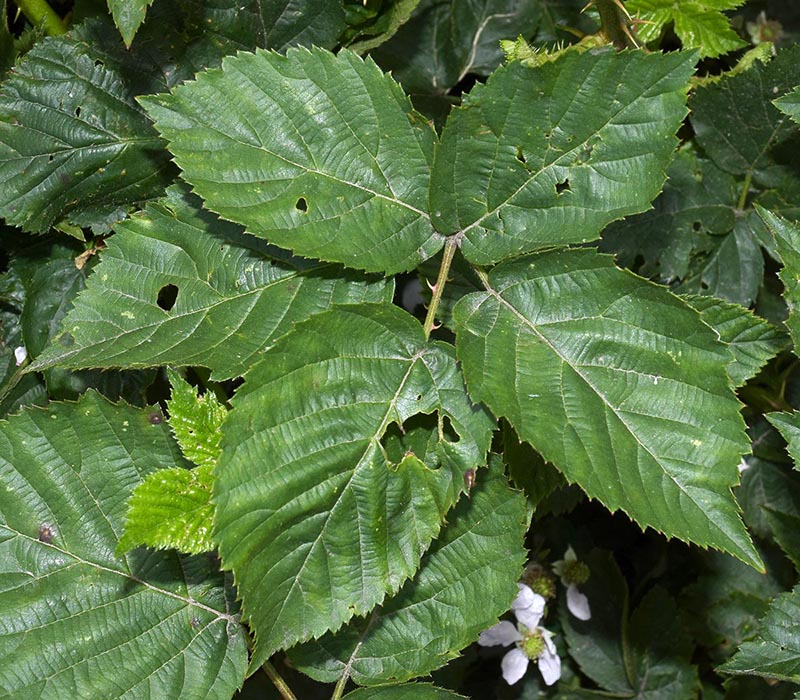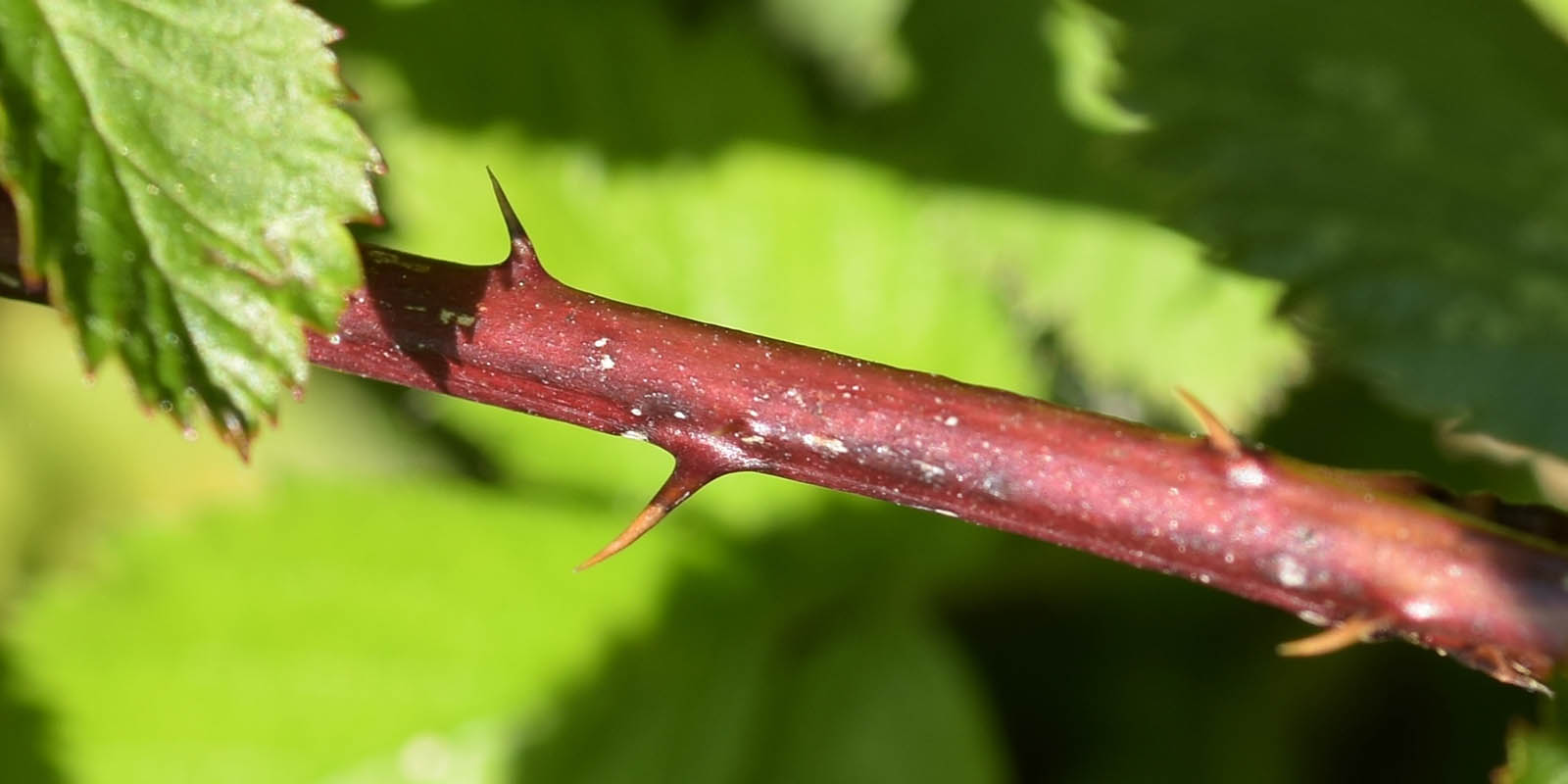
Rubus plicatus – Section Rubus
back to Alphabetical index · Taxonomic index
This is one of the most widespread members of section Rubus, occuring on dry, strongly acidic sandy soils throughout Britain and Ireland. It can be locally abundant on heathlands, where the fresh yellow-green growth in late spring is eye-catching. Like most members of the section it flowers in early summer and quickly produces small fruit. It is similar to several other section Rubus species, particularly R. bertramii, but can be identified by a combination of its simply branched inflorescences with relatively few flowers and its short
stamens with usually no hairs on the anthers. The leaves are often more distinctly plicate than most other species. Unlike a few other similar species, the leaves never have more than five leaflets.


Flowers are about 2cm in diameter with white or pale pink petals (often those with pinkish petals fade very quickly in sunlight, but the pink colour may be visible in the unopened ones). Petals are broadly elliptical with a rounded apex and are not touching when fully open. Sepals are distinctly shining green due to sparse hairs, except on the margins, giving the appearance of a white border in bud – a typical feature of most Section Rubus species (and some other species).





The two photos below are of the same flower. Most of the stamens do not protrude above the top of the styles when the flower is viewed from the side (even though they are much longer, they are widely splayed out so appear shorter
). Compare to the photos of R. bertramii, which usually has the stamens clearly longer
than the styles. The stamens of R. plicatus also seem sparser than those of R. bertramii. Styles are green in both species.


Leaves are sharply indented along the veins (plicate) and coarsely serrately toothed. They are quite smooth and shiny in appearance above, in common with many section Rubus species, but usually have some sparse hairs.


They are also relatively thinly and shortly hairy below.


The stems turn a reddish or brownish colour in the sun and are almost hairless and shining, with rather widely-separated fairly slender but long prickles, typically (as below) red at the base and yellow at the tip. They are typically fairly long (longer than the stem diameter) and gently curved, rarely falcate (hooked). There are usually numerous sessile glands (i.e. unstalked glands typically yellowish or orange in colour like tiny grains of sand). These are often more noticeable on Section Rubus species due to the lack of hairs and normal stalked glands, but nearly all Rubus species do have sessile glands on the stems and floral branches. They are of little use in identification.


